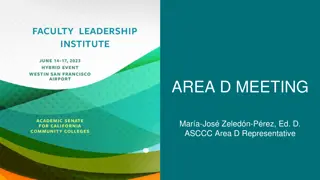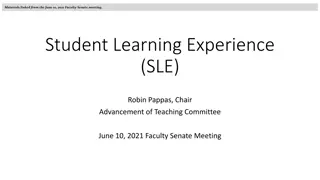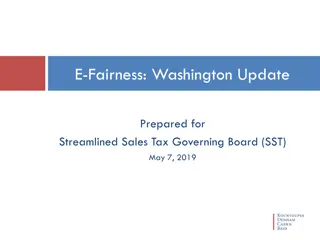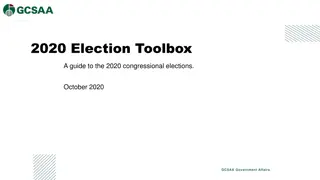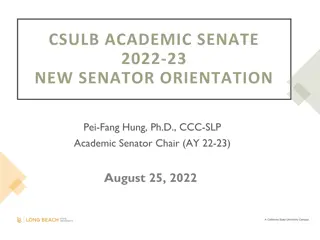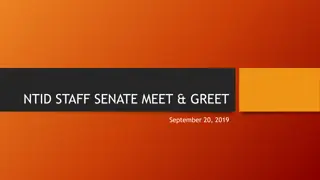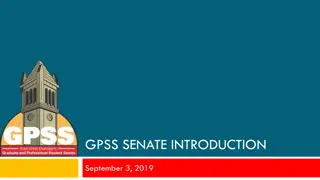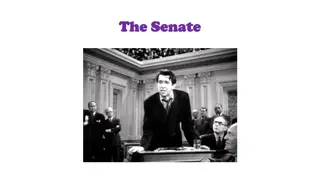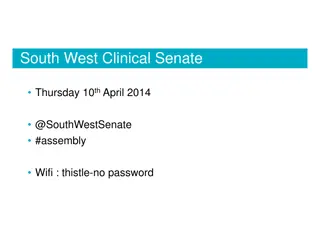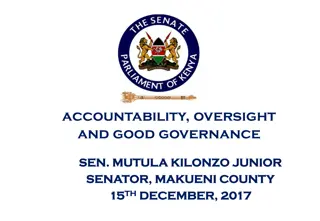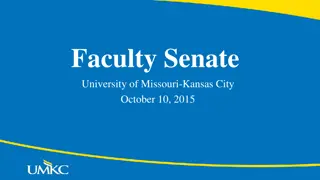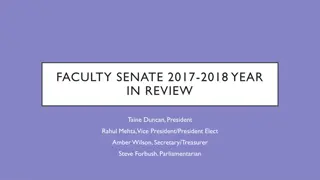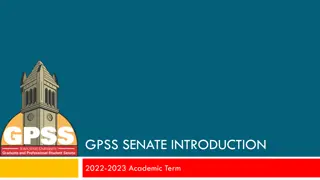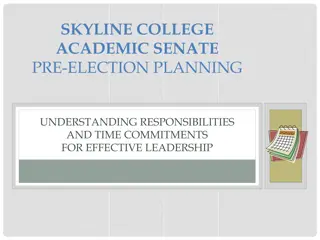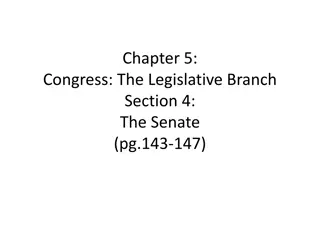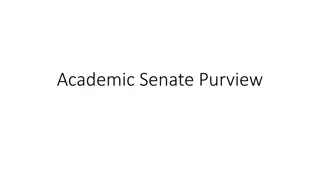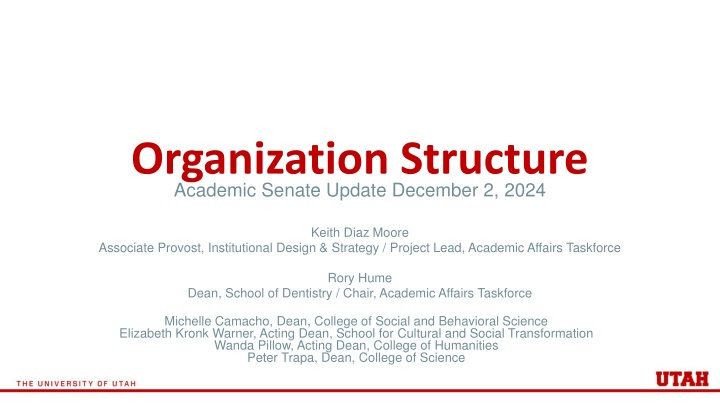
Academic Senate Update - Organizational Structure and Shared Services Focus
Explore the updates to the Academic Senate structure with key members, purpose, and focus on shared services, aiming to maximize mission effectiveness through strategic resource management and interdisciplinary collaboration.
Download Presentation

Please find below an Image/Link to download the presentation.
The content on the website is provided AS IS for your information and personal use only. It may not be sold, licensed, or shared on other websites without obtaining consent from the author. If you encounter any issues during the download, it is possible that the publisher has removed the file from their server.
You are allowed to download the files provided on this website for personal or commercial use, subject to the condition that they are used lawfully. All files are the property of their respective owners.
The content on the website is provided AS IS for your information and personal use only. It may not be sold, licensed, or shared on other websites without obtaining consent from the author.
E N D
Presentation Transcript
Organization Structure Academic Senate Update December 2, 2024 Keith Diaz Moore Associate Provost, Institutional Design & Strategy / Project Lead, Academic Affairs Taskforce Rory Hume Dean, School of Dentistry / Chair, Academic Affairs Taskforce Michelle Camacho, Dean, College of Social and Behavioral Science Elizabeth Kronk Warner, Acting Dean, School for Cultural and Social Transformation Wanda Pillow, Acting Dean, College of Humanities Peter Trapa, Dean, College of Science
Our purpose Why focus on org structure and shared services? To maximize our mission, we must be strategic about how we manage and allocate resources given the growth orientation within our increasingly resource-constrained environment. Three desires: 1. Build upon the wisdom of the evidenced self-organizing of shared resources 2. Do so with a focus on equitable effectiveness of supporting student and faculty success 3. Find ways to increase interdisciplinary efforts in teaching, research and service, by reducing barriers and discovering mechanisms by which to facilitate
Process informed by feedback Pilot: Shared advising rollout (Spring 2024) Feedback indicated that faculty/staff wanted 1) a slower process; 2) the opportunity to provide feedback throughout; 3) to be more data- informed; and 4) more communication about the changes. Rollout experienced management/leadership issues Organizational Structure project 1. Process/timeline: Decision-making and planning occur over the course of roughly 12 months, with implementation not beginning until the following academic year. 2. Collaboration: Process integrates faculty/staff voice. 3. Transparency: Communication and planning take place through regular discussions/updates for various stakeholder groups.
Process and timeline Phase 1: Context (June-Aug 2024) Analysis of organizational structures among 38 AAU peers Phase 2: Diagnostics (Aug-Nov 2024) Analysis of what is working well, areas that need support and what would be important to faculty and staff in a shared services model Phase 3: Solution (Dec 2024-Jan 2025) Establish organizational structure and leadership that can guide a well-informed collaborative rollout of shared services Phase 4: Implementation Planning (spring semester) Design shared services and develop operational plans Phase 5: Implementation (2025-26 academic year) Implement designed shared services model
Process / Phase 1 Completed August 2024 Two Parallel Propositions 1. University of Utah would benefit from a unified approach to enhancing student success while engaging stakeholders through shared governance to balance strategic goals with community voice. Shared services with an initial focus on four units that are often found sharing services (70%) in various ways across our peers 2. In moving toward shared services, the organizational structure needs to accommodate effective and clear management of shared services and improve opportunities for collaboration across disciplines. Exploration of different organizational management models
Process / Phase 2 Focus: Colleges of Humanities, Science, Social and Behavioral Science and the School for Cultural and Social Transformation Understand what is working well, where more support is needed and what would be important to faculty and staff in a shared services model Areas of Exploration: Administrative support (travel planning, calendaring, etc.), communications and marketing, event planning, facilities, fiscal management, human resources, IT support, student scholarship administration, student services, research administration and wellbeing initiatives, among other potential services
Process / Phase 2 Organizational Management Models Two models: 1. Share services across all four academic unitsor 2. Share services across Humanities, Social and Behavioral Science and Transform Determine title, roles, etc. of leader and deans
Commitment to transparency Participating units Deans and project team meet every other week Deans meet with their leadership teams regularly and update their faculty/staff Senate and Senate EC - monthly updates Deans met with their Senate reps to discuss the project and address questions CAD - monthly updates after attendance at retreat President and Cabinet - regular updates from Provost since August Trustees Executive Committee updated in October Academic Subcommittee updated in September, November
Collaboration and stakeholder input Process to gather faculty and staff feedback: Co-designed with 4 participating deans 12 listening sessions conducted for faculty and staff Survey for faculty and staff Online feedback form Analysis of listening sessions and survey data ongoing Townhall to share findings scheduled for December 11
Next Steps Structure to be determined by the end of 2024 calendar year Feedback from deans and their leadership teams on structure, dean/leader position descriptions, leader title, and label for the group of colleges in December Internal university-wide search for a leader in January Leadership of shared service design will transition to appropriate leader(s) based upon organizational management model Additional faculty/staff feedback and student feedback to be gathered as services are designed
More Information Project website: https://academic- affairs.utah.edu/organizational-structure-project/ Please refer to this page for answers to FAQs about the project


